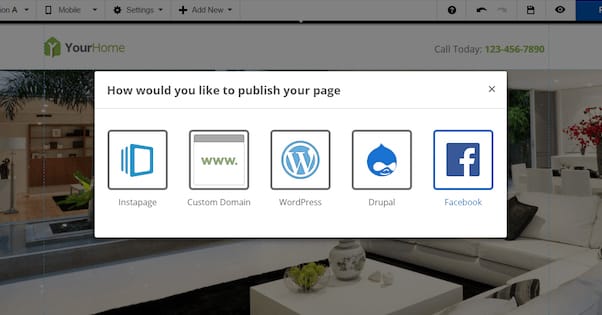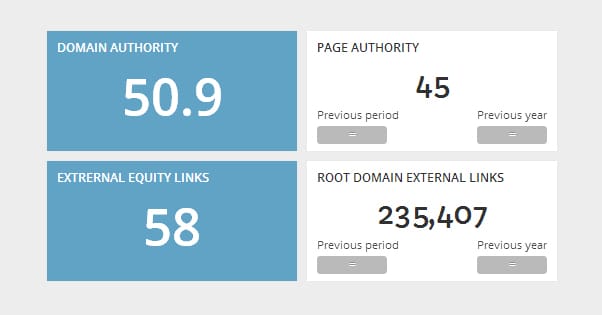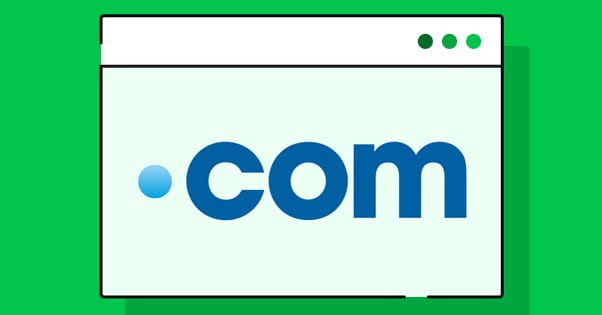Do You Need a Custom Domain to Be Successful with a Blog?
Published by Drew Hendricks • Resources • Posted July 17, 2017 ContentPowered.com
ContentPowered.com
Let me answer your question with a question. You ask whether or not you need a custom domain to be successful as a blogger. To this I respond: search for any keyword you want. I’ll wait.
Got one? Alright, tell me. How many of the results on the first TWO pages of Google – that’s the top ~20 results – use a non-custom domain? Let’s look at a few examples.
- Query “Gaming”. I’ve got Reddit, YouTube, Wikipedia, Engadget, Mashable, PC Gamer, the Verge, Amazon, Craigslist, TED, Gizmodo, and some local results.
- Query “Red Widgets”. I’ve got Website Development Training, Ranks.nl, Apple, Red Earth Design, Github, some Google Books results, and some random coding sites.
- Query “best faucets for a kitchen”. I’ve got Kitchen Guyd, Faucet Assistant, Consumer Reports, Faucet Mag, Kitchen Spike, Amazon, Pinterest, This Old House, and some other DIY sites.
- Query “Plumber in Denver”. I’ve got Home Advisor, Yelp, Angies List, the Yellow Pages, Porch.com, and a bunch of individual plumber websites.
- Query “blogs”. I’ve got Wikipedia, BloggingBasics101, Forbes, Blogging.org, The Atlantic, WordPress itself, the New York Times, the Guardian, Google’s Blog, the Windows blog, the Financial Times, and Seth Godin’s Blog.
The only one of those, the ONLY one with a non-unique domain name result that isn’t something like books.google.com is the last one. Seth Godin’s blog is a Typepad blog that he has not seen fit to use a custom domain for.
Granted, this isn’t exactly a scientific experiment. There are plenty of rather good blogs on the various blogging platforms that don’t use custom domains. Many of them tend to be the blogs of people who are otherwise famous, however. For example, Seth Godin’s blog up above. See also, the sporadic updates and odd observations of George R. R. Martin on Livejournal.
So, if you’re already famous for some reason, like being a TV star, famous author, or prominent CEO, you can make a WordPress.com, blogger, Livejournal, or Xanga and probably be perfectly fine.
On the other hand, if you’re trying to boost a business or get famous, you can’t really use the ultra-unprofessional free blog hosts. Or, rather, you can use them as hosts, but you really should use a custom domain.
Think about it like a physical address. Imagine if your retail location was required to put the name of the landlord who owns the real estate into their brand name. That’s basically what you’re doing; advertising the name of the host of your blog right up there next to your brand name.
The Many Benefits of Custom Domains
There are a lot of potential benefits to using your own custom domain, whether you’re using shared hosting or not. Let’s go over them.
Branding. With a custom domain name, you get all of the branding power that comes with a domain name. If you’re using a WordPress, Blogger, or TypePad account, everyone knows you’re a subdomain.
There are a lot of benefits to this kind of branding. First and foremost among them is the ability to keep your brand if you choose to transition to a new architecture. Say you’ve built MySite.wordpress.com for two years, but you’ve decided that you’ve outgrown WordPress, and you want to move to your own hosting with your own custom architecture. You check, but you find that MySite.com is already taken, and the .net, .org, .biz, and other variations are registered as well.
If you have a top level domain from the start, you can do whatever you want on the back end with little or no change to what your users experience, or what Google sees.
One huge benefit of this is that migrating a domain name is a huge undertaking that can tank your rankings for weeks or months before they settle down again. It takes a while for Google to recognize that MySite.wordpress.com and MySite.com are the same page, not duplicates or copies, and that you intend to have .com replace the WordPress version. When you have 301 redirects in place, you can speed up the process, but you still lose some ranking initially. Not to mention all of the links you earn that will point at the wrong page and won’t change when you change your domain.
It’s also a lot easier to include a custom domain on marketing material. Imagine if someone had to read a WordPress.com URL on the radio for a radio commercial. How many people would remember that to type it in later? How many people would leave off the WordPress part and just type in the unique word dot com? You’d be surprised at how many people hear a URL like www.mysite.org and end up typing www.mysite.org.com simply out of habit.
The ability to build domain authority. Domain authority is a metric of value that you build up by having a quality site on a good domain over time. It’s also something that you don’t get with a shared domain, since you’re just one of many thousands of subdomains on the main domain. In fact, all of the domain authority you gain on a subdomain is just going to the main domain. You’re not building up MySite’s authority, you’re building up WordPress’s.
More likely approval in ads programs. Ad programs like Google’s AdSense and AdWords tend to be pretty picky about the sites they let into their networks. One metric they generally use is the age of a domain. Others include site quality and source.
WordPress blogs and other hosted subdomain blogs have a harder time getting approved due to the combination between the low barrier to entry and the history of abuse. Far too many people over the years have abused free blogging platforms to make thin content spam blogs or blogs full of stolen content just so they can rake in ad revenue for a short time before they’re banned.
That’s not to say that it’s impossible to get into an ad program with a subdomain blog. It’s just likely to trigger a harsher evaluation. It’s a strike against you before you even begin.
Not sharing space with spam sites. I know there’s a lot of discussion about what makes a bad neighborhood online. The concept of shared hosting being a strike against you just by being shared is somewhat debunked – Google is smart enough to evaluate sites individually – but it’s a little different with subdomains. The fact is, if there are 100 WordPress sites and 99 of them are bad, it doesn’t look good on you to be in the same group.
Now, there are a ton of good sites on all of these subdomain hosts, so you don’t have to worry too much about this specific concern. It’s just one more potential issue stacking up on top of a hundred other potential issues.
Ability to create custom email addresses. While this technically falls under the heading of branding, so too do many other benefits as well. These days, professional email communication is a must. No one wants to send a customer support message to a business only to find the response is coming from a yahoo.com email address.
You can get around this to an extent by using Gmail. Gmail is widely considered a relatively high quality email provider suitable for businesses. However, once you reach a certain level, it gets to be a security concern. The easier it is to mimic your email address, the easier it is to phish employees or steal information. Gmail is, unfortunately, common and easy to imitate. A custom domain name is more difficult.
Control on the back end. This sort of came up in the first section, with migrating from WordPress or some other blogging platform to a stand-alone self-hosted system. However, there’s more control issues at hand. When you control the back end, you control everything about it. You can install and customize plugins. You can manage files directly rather than through a file manager.
Perhaps most importantly, with a custom domain you can get SSL. You can’t do SSL with a shared domain name, since it’s a form of security that relies on domain. SSL is a ranking boost and a security boost, so it’s a good idea to use it whenever you can.
Of course, there are always a few drawbacks to anything. When you own your own domain, the number one drawback is having to pay for it. Of course, a domain is generally only a few dollars a year, unless you’re paying a huge fee upfront for something with a lot of age and pedigree to it. There are a ton of different domain registrars, and many of them will offer you deals whenever they can just to get a customer. Make sure to set up auto-pay to keep the name registered on an ongoing basis, too; you don’t want to lose the domain by forgetting to pay for it.
Picking a Good Domain Name
The other hard part about owning a domain rather than using a subdomain on a free host is that you have to actually pick that domain name. It can be pretty difficult to navigate the world of domains, actually.
First of all, you pretty much need a .com domain, unless you’re in a special niche that requires another. Nonprofits, for example, can make good use of .org. Educational sites can – and should – use .edu if possible, because it’s a regulated domain. If you really want to go gimmick you can use a .ly domain, but be aware that even many of the companies that use funky URL schemes eventually change do a .com. Bit.ly turned into Bitly.com and Del.icio.us turned into Delicious.com for that reason.
Secondly, the domain you choose needs to avoid being an exact match keyword. Unless your actual business is named Best Kentucky Faucets, you shouldn’t go for bestkentuckyfaucets.com. These are called exact match domains, and they’re generally frowned upon by Google specifically because they were exploited for SEO benefit. In the past, you could use an exact match domain and get a ranking boost because you’re squarely focused on that keyword. The problem is, so many poor quality sites relied on that strategy that Google abolished it.
Third, try to choose a shorter name, preferably something that makes sense with regards to your niche. You can build an obscure name into something powerful, with enough work. ShoutMeLoud is a site about marketing and SEO, but nothing in their name really says that. On the other hand, you already know what a site like SEMRush does, or a site like SearchEngineJournal does. Even Moz didn’t start as Moz, they were SEOMoz first.
Shorter names are harder to come by, so it can be tempting to use obscure words or acronyms. Feel free to do so, but make sure it’s something you can brand.
You also need to pay attention to any potential issues with the way words in your brand name combine. Pen Island sure is a good name for a pen store, right? Of course, penisland.com might be a very different site. It’s not – it’s a tongue-in-cheek joke site – but it’s the kind of issue you might run into. Remember #SusanAlbumParty, and how it looks a little different without the capital letters.
On top of all of this, of course, the domain needs to be available. Keep in mind that just because no website is on the domain doesn’t mean the domain is available. Many companies maintain registration over similar domain names or over their acronyms just to avoid phishing attacks or people trying to park names out from under them. You need to check with a registrar to make sure the domain is available.
So, while you CAN potentially run a blog without a custom domain, all you’re doing is saving like $15 a year, a little work up front, and handicapping your SEO from the get-go. I wouldn’t recommend it.










